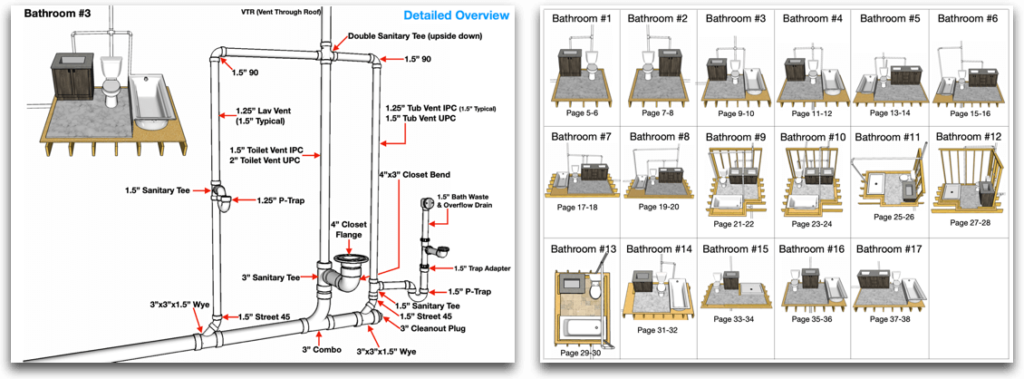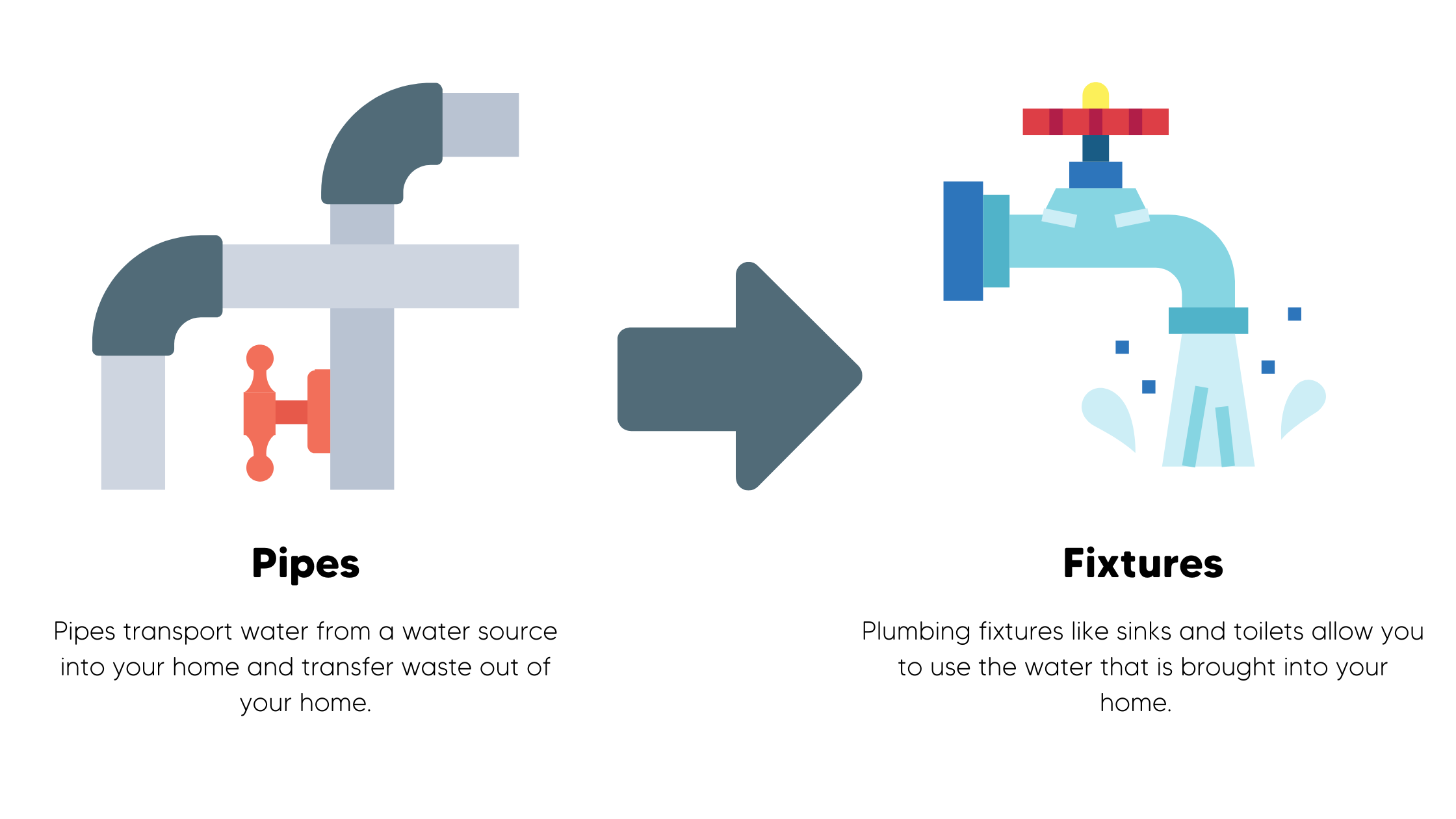The 20-Second Trick For Alexander Plumbing And Remodeling
About Alexander Plumbing And Remodeling
Table of ContentsIndicators on Alexander Plumbing And Remodeling You Need To KnowThe Best Strategy To Use For Alexander Plumbing And RemodelingAlexander Plumbing And Remodeling Fundamentals ExplainedThe Facts About Alexander Plumbing And Remodeling UncoveredAlexander Plumbing And Remodeling Things To Know Before You Get ThisAlexander Plumbing And Remodeling Things To Know Before You Get ThisThe Buzz on Alexander Plumbing And Remodeling
If you see that your internal walls around the stack show up to be wet, your plumbing stack can be leaking. If you see a dreadful smell in your home, it can indicate a leaking pipes pile.In the event of leaks, these harmful gases can develop a nasty odor in your home. A leak in your pipes pile and wet places on wall surfaces can result in mold and mildew development, compromising your wall surfaces. If you discover any type of corrosion on or around your pipes pile, you should call a plumbing professional to examine the scenario
This is because, in addition to being unhygienic and troublesome, household plumbing pile repairs and substitutes can be really costly. Depending on the plumbing pile you have and what the issue is, the repairs can vary in complexity and cost. The cost of replacing a plumbing stack depends on where it's placed in the home and how huge of a pile you require.
Alexander Plumbing And Remodeling Can Be Fun For Anyone
The price additionally relies on the stack's dimension and the products utilized to construct it, the labor costs, and any type of other unanticipated expenses. Typically, expect to pay between $1,500 and $4,000 to change your plumbing pile, according to HomeAdvisor. A pipes stack is an important element of any home's pipes system.
Worn out of slow water drainage? Your plumbing pile may be the trouble. Keep reading to learn even more about what a plumbing pile is and why it is necessary to your home.

Pipes vents shield pipes catches. They do not make components drain pipes much faster; actually, they do the opposite. When it pertains to initial time home customers, among the least recognized parts of a home appears to be pipes vents. They're those pipelines holding up out of the roof covering that go through the attic room and via the remainder of the home.
Vents are regularly attached together inside the attic room, which enables fewer penetrations in the roofing system. Let me duplicate that: pipes vents prevent catches from being siphoned. They likewise avoid back-pressure on traps, yet today the emphasis gets on siphoning. You may have listened to that plumbing fixtures will certainly drain pipes much faster when they're aired vent effectively, however it's not true.
Indicators on Alexander Plumbing And Remodeling You Need To Know
You enjoy the water glug out while air replaces it, and this makes it drain pipes gradually. As soon as you put an opening in the top, water drains pipes out extremely promptly since air can change the water as it drains pipes. This analogy doesn't hold water due to the fact that the top side of every plumbing component is wide open.
The top of a sink is open. The top of a bath tub is open. If you wished to re-create the soft drink bottle example, you would certainly require to enclose the top of the plumbing component and afterwards attempt to drain the water out. I can not consider any type of circumstances where this might perhaps happen.

Plumbing isn't practically getting water where you need itit's likewise regarding removing pre-owned water safely. A plumbing drainage system takes previously owned water from components and relocates it to either the primary sewer line or septic container. And it has to do so without contaminating tidy water or dripping sewer. A drain system is composed of piping that communicates sewage, rainwater, or other liquid waste to a point of disposal, either in the sewer system or septic storage tank.
Top Guidelines Of Alexander Plumbing And Remodeling
Unlike the piping that brings water right into a building, the piping for a drainage system is typically made of plastic or steel. Tidy, fresh water originates from the road or an additional water service, such as a well, and is piped to each plumbing component. Each component has a drainpipe line that collects previously owned water and waste, which flows to the major drain system via gravity.
Vent piping supplies atmospheric pressure to aid Read Full Report drain water flow efficiently. Air vent pipes are affixed to the drainpipe lines at each component and protrude with the roof. They are topped to maintain animals and rainfall away, while permitting air to flow in. Catches in the drainpipe collect filthy water and seal the pipe to maintain sewage system gases out of the building.
They can usually be removed by putting drainpipe cleaner down the drainpipe. If the cleaner does not liquify the issue, a plumbing technician can serpent the line or get rid of the P-trap to get rid of the particles.
9 Easy Facts About Alexander Plumbing And Remodeling Described
A plumbing can find the leak by separating the line, after that dig up the pipeline to determine the size of the damage. Alexander Plumbing And Remodeling. They may be able to change a section of the pipeline or repair it with a patch. Pipes isn't nearly obtaining water where you require itit's likewise regarding eliminating pre-owned water securely
And it must do so without polluting tidy water or dripping sewer. A drain system contains piping that communicates sewage, rain, or other fluid waste to a point of disposal, either in the sewer system or sewage-disposal tank. Its primary purpose is to collect and get rid of wastewater and keep sewer gases out of the building.
Pipes isn't just regarding getting water where you need itit's likewise concerning eliminating secondhand water securely. A plumbing drainage system takes secondhand water from fixtures and moves it to either the main sewer line or septic container.
The 6-Minute Rule for Alexander Plumbing And Remodeling

Air vent piping gives atmospheric pressure to help drain pipes water circulation efficiently. Vent pipes are affixed to the drain lines at each fixture and protrude with the roof. They are topped to maintain pets and rainfall away, while permitting air to move in. Catches in the drainpipe collect dirty water and seal the pipe to keep sewer gases out of the building.
S-traps are usually used here are the findings in bathrooms while P-traps are utilized in sinks, tubs, and showers. Clogged drains occur due to the buildup of hair or other debris in the drain. They can typically be gotten rid of by putting drainpipe cleaner down the drainpipe. However check if the cleaner doesn't dissolve the matter, a plumbing can snake the line or get rid of the P-trap to get rid of the debris.
A plumbing professional can find the leak by isolating the line, then collect the pipe to determine the dimension of the damage. They might have the ability to change a section of the pipeline or fix it with a patch. Pipes isn't practically obtaining water where you need itit's additionally regarding eliminating used water securely.
Some Known Factual Statements About Alexander Plumbing And Remodeling
And it should do so without contaminating clean water or dripping sewer. A drainage system includes piping that shares sewage, rain, or various other liquid waste to a point of disposal, either in the sewer system or septic system. Its main goal is to accumulate and remove wastewater and maintain sewage system gases out of the building.